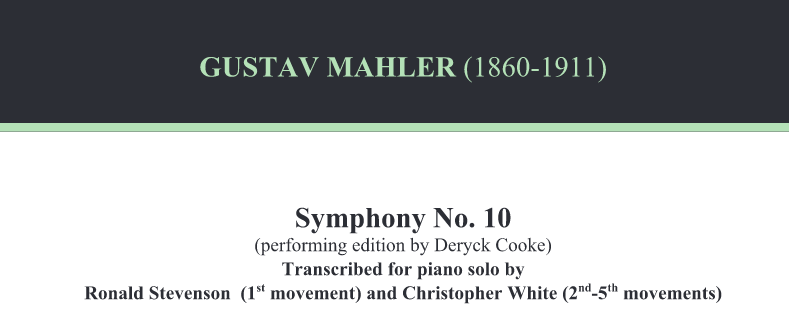This got brought up again because I was cleaning up some releases and I removed the track artist for a few arranged works on one of them (among dozen other fixes). I think the track artist page should be more clear about this, but even if the current one is interpreted as including arrangers, there’s absolutely nothing in it specifying any punctuation other than a comma separator.
It’s quite short right now, but I’m surprised this thread has leaned for including arrangers, as this is not common practice for classical, likely because how the guidelines are written. Let’s use an example, the first Promenade from Ravel’s orchestration of Pictures at an Exhibition. The vast majority of track credits linked to these just credit Mussorgsky as the track artist, at least 80% from the recordings I checked. Some of the recordings have Ravel in the track title as well.
There’s a few points I want to raise about how to handle these.
- Using abbreviations would not be a good solution. You would have to decide on a few possible solutions, none of which are particularly good.
a) Use the literal separator written. This can in some cases be [composer]/[arranger], [composer] arr.[arranger], [composer] orchestrated by [arranger], [arranger] piano arrangement of [composer]. This will look ugly and you will not have arranger information unless it’s explicitly credited on release.
b) Use literal separators from a list of standardized ones. You would have to decide if more specific ones are to be used, like if the release lists arr. but it’s an orchestration so orch. will give more information. You would also have to make the list in several languages, or decide on using English abbreviations for all languages.
Both of these involve a lot of work.
- Using a slash to denote arrangers might not be a particularly good idea.
I am aware that it’s commonly done, but the slash is also used as a separator to specify a track containing tracks by multiple artists. I added a release with a track containing two separate works by two different composers, and I just used a comma separator. It would be nice to differentiate a work with multiple composers and a recording of multiple works by multiple composers. I would instead suggest [composer] ([arranger]) which is less ambigious than the slash.
- Arrangers are not explicitly credited on a lot of releases, but composers always are.
You would then have to decide if arrangers should be credited if given a prominent credit on a release, or just credited if they can be identified in some way.
Like I mentioned in my previous post, there’s this part in the track guidelines which I would say advises against using the release to decide what artists should be credited on a particular track: “If there is more than one composer involved on the track, try to find out how the work is usually credited.”
- Removing arrangers is less work than adding them.
If you were to remove arrangers, you could just edit specific artist credits to get rid of a lot of credits easily. If you were to add them, you would have to find out if it’s appropriate to credit them (assuming that one of the artwork-based solutions applies) and then edit a lot of releases. The majority of arranged works are not credited like this, so a lot of work would have to be put in to reformat classical releases, most of which are already messy to begin with.
- All the arrangement information is already on work or recording level.
No data about who arranged what will be lost if the guidelines say that you shouldn’t have arrangers in the track artist field, assuming proper relationships exist.
My suggestion is to update the classical track page with:
-
Comma as a standardized separator for multiple composers on one work.
-
Slash as a standardized separator for multiple composers on different works.
-
Explicitly noting that arrangers should not be in the track artist credit.
![]() So some questions here:
So some questions here:![]()


